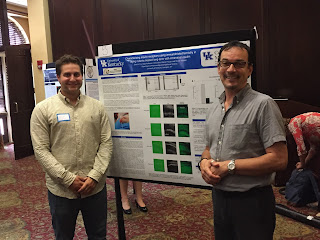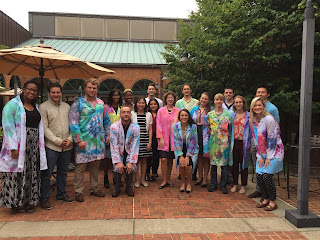A few days prior to the research poster presentations, SURE
students were told to prepare an elevator pitch for the promotion of “their
science.” This pitch was suggested to ensure the students could effectively
communicate their research and findings to all members of the audience, and
included answers to the following questions:
- - What is being investigated?
- - Why is it being investigated?
- - How was the investigation conducted?
- - What was found during the investigation?
- - What directions should future investigations take based on current findings?
This pitch, as well as detailed
elaborations of the students’ research, was given to several members in varying
disciplines of the science community last Friday at UK’s Hilary J. Boone
Center. The discussions of research findings were accompanied by the students
completed research poster masterpieces. Posters were aesthetically pleasing and
complimented research discussions with a “picture” of depth balanced with
simplicity. Poster topics ranged from “Tobacco-free Youth Advocacy Programs in
a Rural, Low Socioeconomic Status Community” to “Characterizing insulin
receptors using immunochemistry in aging rodents treated long-term with
intranasal insulin.”
Students discussed their science
with the different members of audience for two hours and received positive
feedback on their presentations. What was amazing was the enthusiasm and
ownership of students regarding their work. If an individual is a trained and
focused scientist, it is challenging to convince them of the importance of
research outside of their area of expertise. However, after hours of engaging
discussions, the widening of the mind and opening of the eyes of others (including
myself) occurred. This alone is a testament to how involved and effective the
students’ talks were. The culmination of the research projects described not
only alerted me to the environmental contribution to health, but also of the
many facets of environmental health research.
The effort, mastery, and ownership
of the students displayed during the poster session is evidence of the success
of the 2017 Summer Undergraduate Research in Pharmacology and Environmental
Sciences Program.
Brittany Rice, M.S.
Nutritional Sciences Doctoral Student
Graduate Research Assistant











